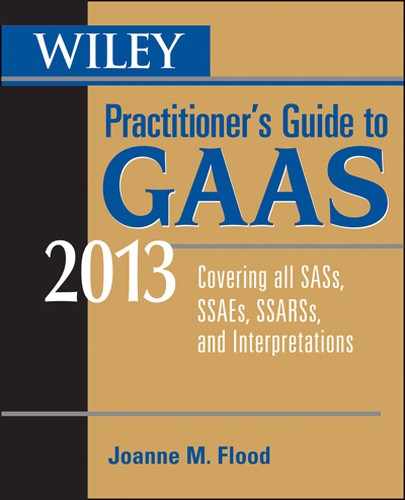AU 431: Adequacy of Disclosure in Financial Statements
AU-C 705: Modifications to the Opinion in the Independent Auditor’s Report
AU EFFECTIVE DATE AND APPLICABILITY
| Original Pronouncement | Statement on Accounting Standards (SAS) 32. |
| Effective Date | This statement currently is effective. |
| Applicability | Audits of financial statements in accordance with generally accepted auditing standards (GAAS). |
AU-C EFFECTIVE DATE AND SUMMARY OF CHANGES
SAS No. 122, Codification of Auditing Standards and Procedures, is effective for audits of financial statements with periods ending on or after December 15, 2012.
AU-C Section 705 has no significant changes from the extant standard.
AU DEFINITIONS OF TERMS
Adequate disclosure. Material matters include the (1) form, (2) arrangement, and (3) content of the financial statements and the appended notes, including:
- Terminology used
- Amount of detail given
- Classification of items
- Bases of amounts
AU-C DEFINITIONS OF TERMS
Source: AU-C 705.06
Modified opinion. A qualified opinion, an adverse opinion, or a disclaimer of opinion.
Pervasive. A term used in the context of misstatements to describe the effects on the financial statements of misstatements or the possible effects on the financial statements of misstatements, if any, that are undetected due to an inability to obtain sufficient appropriate audit evidence. Pervasive effects on the financial statements are those that, in the auditor’s professional judgment:
- Are not confined to specific elements, accounts, or items of the financial statements;
- If so confined, represent or could represent a substantial proportion of the financial statements; or
- With regard to disclosures, are fundamental to users’ understanding of the financial statements.
OBJECTIVES OF AU SECTION 431
This section is a carryover from the explanation of the reporting standard on adequate disclosure issued when GAAS were originally proposed in 1947. Thus, it is more philosophical than operational.
OBJECTIVES OF AU-C SECTION 705
AU-C section 705 states that
. . . the objective of the auditor is to express clearly an appropriately modified opinion on the financial statements that is necessary when
FUNDAMENTAL REQUIREMENTS
Reporting Standard
According to 431.01, the third standard of reporting is “Informative disclosures in the financial statements are to be regarded as reasonably adequate unless otherwise stated in the report.”
Basic Requirement
If management fails to disclose information required by generally accepted accounting principles (GAAP), the auditor should:
Exceptions to Need to Include Information
The auditor may omit the information from the audit report if:
Accounting Services Permissible
An independent auditor may participate in preparing financial statements, including accompanying notes. This participation does not change the character of the statements as management’s representations.
INTERPRETATIONS
There are no interpretations for this section.
TECHNIQUES FOR APPLICATION
To aid the auditor in determining that all material matters have been adequately disclosed, a disclosure checklist may be completed at the end of the audit. The auditor may prepare his or her own disclosure checklists; however, checklists may be obtained from many sources, such as the American Institute of Certified Public Accountants (AICPA).
